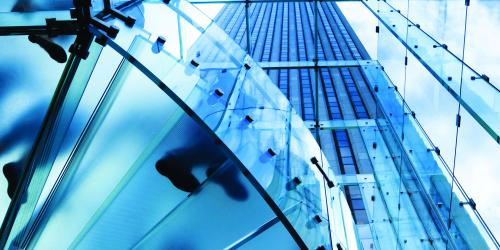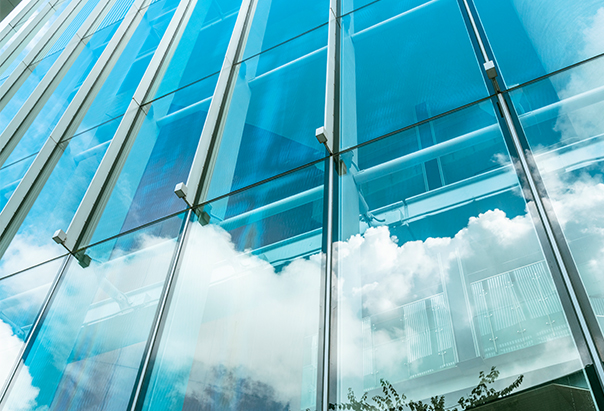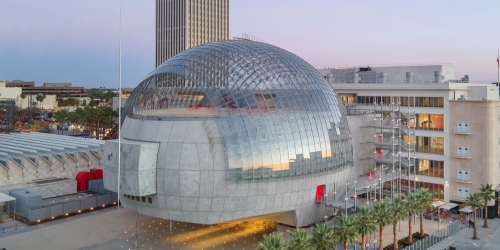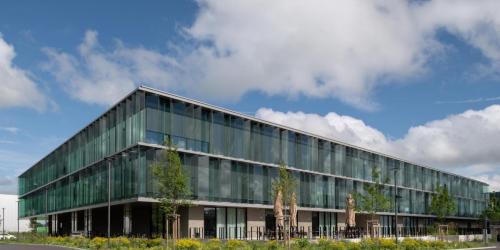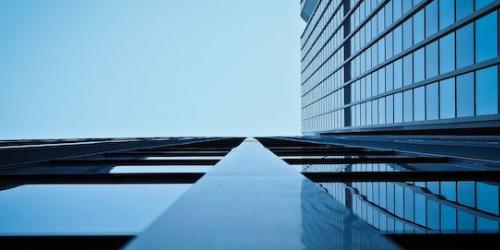ABNT NBR 16918 standard for heat-strengthened glass
In November 2020, the Brazilian Association of Technical Standards (ABNT) published the ABNT NBR 16918 standard, which establishes the general requirements related to heat-strengthened glass. This type of glass, widely used in the North American and European market, has not yet found relevant space in the Brazilian market.
In this short article, we will address the possible benefits of using heat-strengthened glass for a glass/ Saflex® PVB interlayer/glass laminate configuration, especially its post-breakage behavior.
Heat-strengthened glass has intermediate characteristics compared to annealed glass and fully tempered glass. For example, the thermal stress resistance of heat-strengthened glass resists to about 70°C, while annealed glass resists to about 40°C and fully tempered glass resists up to about 200°C. The mechanical properties of heat-strengthened glass also fall between annealed and fully-tempered glass.
In addition to its thermal and mechanical properties, its breaking pattern also falls in the intermediate range. When annealed glass breaks, large and dangerous fragments form that may be capable of causing serious injuries. Fully tempered glass (processed according to ABNT NBR 14698), however, tends to fragment into small pieces with a maximum size of 100 mm, which can drastically reduce the potential for serious cuts and piercing injuries. Heat-strengthened glass produces fragments of intermediate size, typically between the sizes seen in annealed glass and fully tempered glass.
Safety of laminated tempered glass
Recently, in the normative technical forums, there have been discussions related to the safety of laminated tempered glass, especially for structural applications such as in balustrades, ceilings, floors, and stairs. This discussion is primarily due to the breaking pattern of tempered glass. On the one hand, the monolithic form is safer than annealed glass, but on the other hand, it can become riskier depending on its application.
In the case of a single layer of a tempered laminated glass breaking, the mechanical resistance of the laminate can be reduced by almost half, making the system as a whole more vulnerable to additional damage. However, the greatest risk occurs when both layers of the laminate break, since the mechanical resistance of the assembly is essentially transferred to the interlayer. With the interlayer supplying the mechanical resistance, there is a risk of the structure collapsing, depending on the installation conditions and interlayer characteristics. This collapse can lead to the laminate folding over or collapsing as a complete unit.
When an interlayer such as Saflex Structural (DG XC) is used in tempered laminated glass and both glass layers break, in general, the interlayer is able to support the system through its rigidity and prevent its collapse for a certain period of time. However, inevitably, after an amount of time with no constraint added to the damaged structure or replacement of the broken laminate, the system may collapse.
The amount of time elapsing before the potential collapse is generally related to how the system is fixed and the climatic conditions where the laminate is installed (e.g., temperature, humidity, exposure to water).
It is in these scenarios that the use of heat-strengthened laminated glass can offer benefits.
Post-breakage strength of heat-strengthened laminate
When a single layer of glass in the laminate breaks, the mechanical post-breakage strength of heat-strengthened laminate is virtually unchanged, keeping the system relatively stable. But the most relevant difference is in cases where both layers of glass in the laminate break.
Studies were carried out by Eastman in Europe with single-sided, fixed laminated glass, using criteria and procedures established in international standards. In these studies, it was found that when both layers of glass broke in tempered laminated glass with Saflex Structural (DG XC), the rigidity of the interlayer made a difference. The broken laminate did not immediately fold over, and it was necessary to apply a force to “pull over” the laminate to failure.
Using heat-strengthened glass, the same system with the same thickness of Saflex Structural (DG XC), needed significantly more force to be “pulled over” after breakage of both layers of glass. The larger glass fragments of the heat-strengthened glass, in combination with the rigid interlayer, provided a higher level of post-breakage performance before it was forced to failure. The increase of post-breakage performance will vary with the source and location of the stress applied (e.g., static overload, soft body impact, hard body/punch impact).
A benefit of using Saflex Structural PVB (DG XC)
A benefit of using Saflex Structural PVB (DG XC) is that it maintains a level of rigidity in the system and allows for enhanced post-breakage behavior versus conventional PVB. This benefit is further expanded through the use of heat-strengthened glass, since the resistance to post-breakage failure and collapse is increased. Generally speaking, the other requirements related to the safety of the laminate—such as impact resistance, maximum deflection under usage loads, and safety loads—can be met with proper glass design and installation for both tempered laminated or heat-strengthened laminated glass systems.
Since it may expand the safe use of glass in balustrades, especially considering post-breakage performance, using laminated heat-strengthened glass with Saflex Structural PVB interlayer (DG XC) should be considered by the engineering and design community. It should be a key consideration in the evaluation and use of Saflex Structural PVB (DG XC) in projects where the glass needs additional structural performance.





